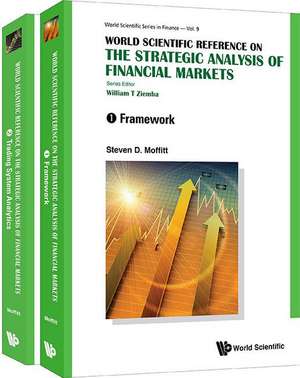World Scientific Reference on the Strategic Analysis of Financial Markets (in 2 Volumes): World Scientific Finance, cartea 11
Autor Steven D. Moffitten Limba Engleză Hardback – 27 mai 2017
Preț: 2576.25 lei
Preț vechi: 3345.77 lei
-23% Nou
Puncte Express: 3864
Preț estimativ în valută:
492.96€ • 537.16$ • 415.39£
492.96€ • 537.16$ • 415.39£
Carte indisponibilă temporar
Doresc să fiu notificat când acest titlu va fi disponibil:
Se trimite...
Preluare comenzi: 021 569.72.76
Specificații
ISBN-13: 9789813142770
ISBN-10: 9813142774
Pagini: 1120
Dimensiuni: 178 x 249 x 43 mm
Greutate: 1.81 kg
Editura: Imperial College Press
Colecția World Scientific Finance
Seria World Scientific Finance
ISBN-10: 9813142774
Pagini: 1120
Dimensiuni: 178 x 249 x 43 mm
Greutate: 1.81 kg
Editura: Imperial College Press
Colecția World Scientific Finance
Seria World Scientific Finance
Descriere
Volume 1 of ""The Strategic Analysis of Financial Markets,"" - Framework, is premised on the belief that markets can be understood only by dropping the assumptions of rationality and efficient markets in their extreme forms, and showing that markets still have an inherent order and inherent logic. But that order results primarily from the ""pred...
